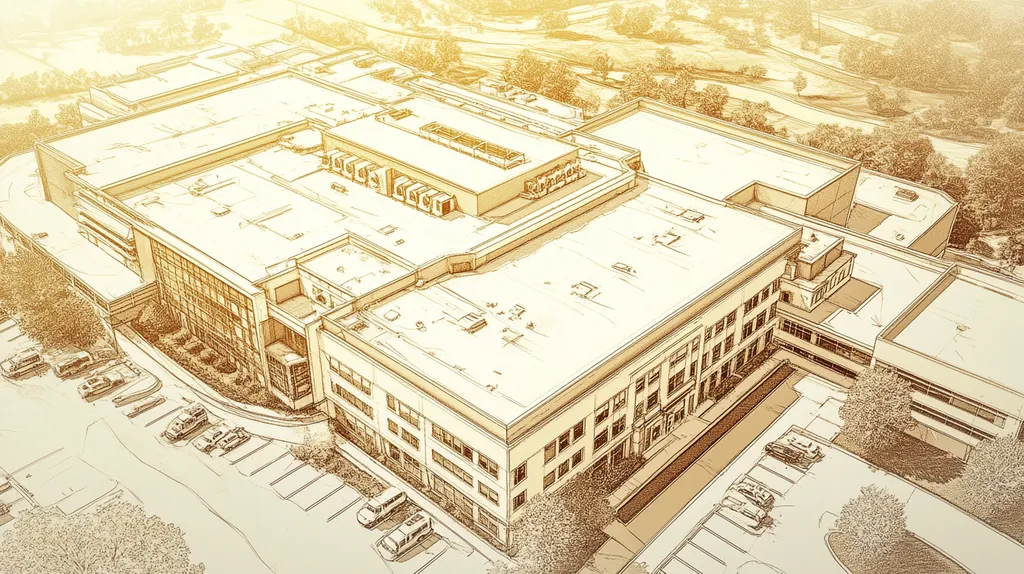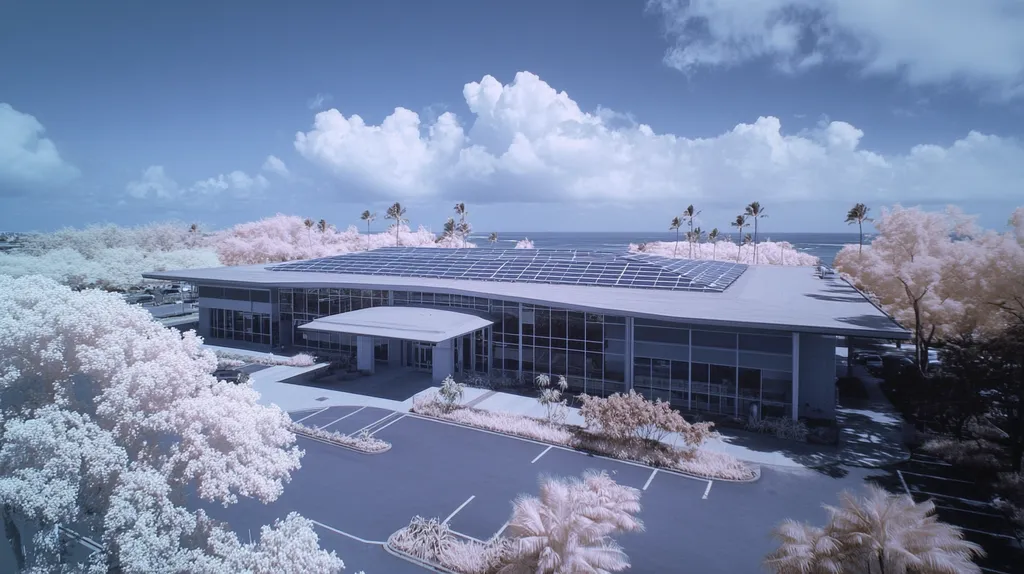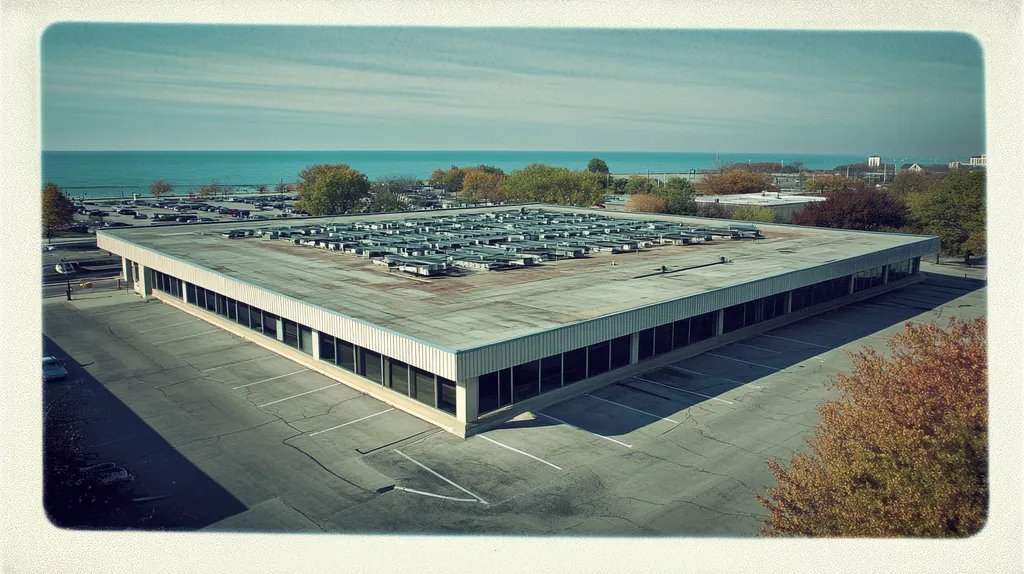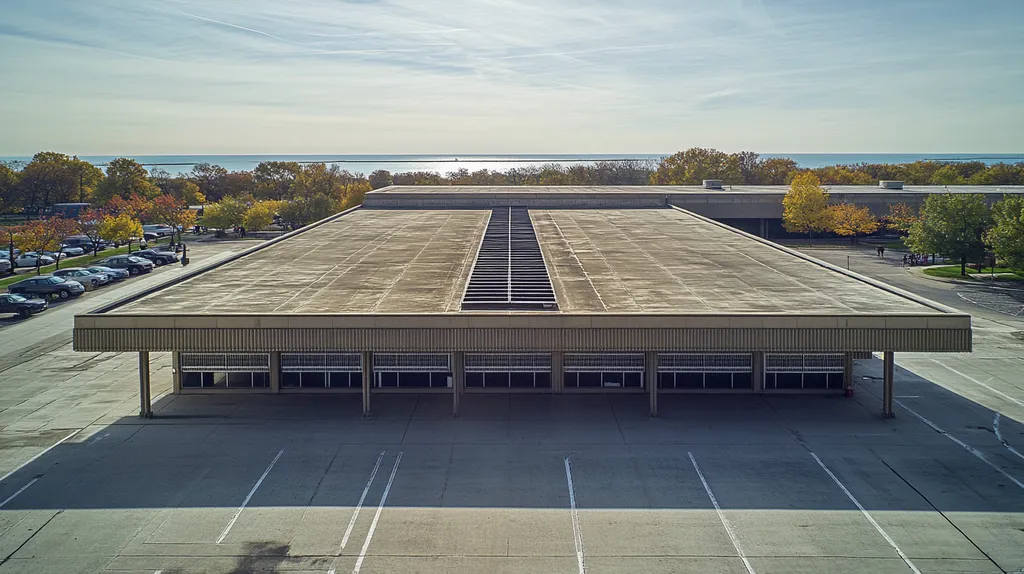Welcome to today’s Battle Royale featuring two roofing heavyweights: “Polyurethane Foam” in the east corner versus “Reflective Membrane” in the west!
Tonight’s showdown pits these contenders against each other across six punishing rounds designed to test every aspect of their performance for thermal emittance.
At stake? Millions in potential costs, decades of building protection, and the critical performance demands of modern commercial and industrial facilities.
Our professional judging panel will evaluate each round on technical merit, real-world performance, and value delivery. After all six rounds, we’ll declare our ultimate champion.
Ladies and gentlemen, facility managers and building owners… it’s time to rumble!
ROUND 1: INITIAL COSTS & INSTALLATION
When evaluating commercial roofing solutions, initial costs and installation considerations can make or break a project’s success. Understanding the interplay between material properties, installation requirements, and project timelines is crucial for maximizing both energy efficiency and return on investment. The stakes are particularly high as poor initial choices can lead to decades of increased operating costs.
Material Expenses
Solar reflectance and thermal emittance properties significantly influence a roof’s temperature regulation capabilities and long-term cost effectiveness. These material properties, rated on a scale from 0 to 1, determine how effectively a roof can reflect sunlight and release absorbed heat. (source: Heat Island Group)
Polyurethane foam systems typically cost between $4.50 to $7.50 per square foot installed, representing a premium initial investment. However, their superior thermal properties and seamless application provide exceptional insulation value and minimal thermal bridging.
Reflective membranes generally range from $3.00 to $5.00 per square foot installed, offering a more budget-friendly entry point. While less expensive initially, they may require additional insulation layers to match foam’s thermal performance.
When considering material expenses alongside thermal performance, polyurethane foam demonstrates clear long-term value despite higher upfront costs, earning an ADVANTAGE in this category.
Installation Complexity
Professional installation requirements vary significantly between these roofing systems, impacting both project cost and quality. Success depends heavily on contractor expertise and environmental conditions during application.
Polyurethane foam demands highly skilled applicators and specific weather conditions for proper installation. The mixing and spraying process requires precise temperature control and humidity monitoring to achieve optimal foam properties.
Reflective membranes offer more straightforward installation procedures with fewer environmental restrictions. Their pre-manufactured nature allows for more predictable application processes and quality control.
While reflective membranes present fewer installation challenges, both systems require proper expertise for optimal performance. This results in a TIE for installation complexity.
Project Timeline
Installation duration directly affects business operations and overall project costs. Longer timelines can mean extended disruption to building occupants and activities.
Polyurethane foam applications typically require 3-5 days for proper installation and curing. Weather conditions can extend this timeline, as application must occur during specific temperature and humidity ranges.
Reflective membrane installation usually takes 1-3 days, depending on roof size and complexity. Their less weather-dependent nature allows for more reliable project scheduling.
Given the significant timeline advantage and reduced weather sensitivity, reflective membranes earn an ADVANTAGE in this category.
ROUND 1 WINNER: TIE
ROUND 2: DURABILITY & LIFESPAN
When evaluating commercial roofing materials, durability and lifespan directly impact both building protection and long-term cost effectiveness. The thermal properties of roofing materials not only affect energy efficiency but also influence how well they withstand environmental stressors and maintain performance over time. Understanding these factors is crucial, as premature roof failure can lead to extensive damage and costly emergency replacements.
Durability Against Weather Elements
Materials that effectively manage heat transfer show superior resistance to thermal stress and weather-related degradation. Thermal emittance plays a crucial role in how quickly absorbed heat dissipates, directly affecting material longevity and performance. The faster a roof can release absorbed heat, the less likely that heat will damage the roofing material or penetrate the building. (source: Cool Roofs)
Polyurethane foam demonstrates exceptional durability due to its seamless application and superior thermal properties. Its continuous surface eliminates weak points while providing consistent insulation, helping it maintain structural integrity under extreme temperature fluctuations.
Reflective membranes, while effective at initial heat reflection, can experience accelerated aging from trapped heat at seams and joints. Their sectional nature creates potential failure points that may compromise weather resistance over time.
Given its superior structural integrity and thermal stress resistance, polyurethane foam earns an ADVANTAGE in weather durability.
Lifespan Considerations
A roofing system’s lifespan directly affects its total cost of ownership and environmental impact. Proper material selection can mean the difference between replacement every decade or sustained performance for half a century.
Polyurethane foam systems typically last 30-50 years with proper maintenance. Their monolithic structure allows for easy repairs and recoating, effectively extending service life without full replacement.
Reflective membranes generally provide 15-25 years of service before requiring replacement. While they offer good initial performance, their sectional nature and mechanical fastening systems can lead to earlier failure points.
The significant lifespan advantage of polyurethane foam earns it an ADVANTAGE in this category.
Maintenance Requirements
Regular maintenance ensures optimal thermal performance and extends roofing system longevity. The complexity and frequency of required maintenance directly impact operational costs and resource allocation.
Polyurethane foam requires minimal routine maintenance beyond periodic inspections and recoating every 10-15 years. Its seamless nature eliminates most common failure points, reducing the need for repairs.
Reflective membranes need more frequent inspections and maintenance, particularly at seams, flashings, and mechanical attachments. They may require regular cleaning to maintain reflective properties and periodic seam repairs.
Based on lower maintenance requirements and fewer potential failure points, polyurethane foam claims an ADVANTAGE in this category.
ROUND 2 WINNER: Polyurethane Foam
ROUND 3: PERFORMANCE FACTORS
Performance factors in commercial roofing directly influence building energy consumption, occupant comfort, and long-term maintenance costs. With energy prices continuing to rise, the thermal performance of roofing materials has become increasingly critical for facility operations. Understanding how different materials manage heat transfer and environmental stresses can mean the difference between optimal efficiency and excessive operating costs.
Thermal Emittance
Solar reflectance and thermal emittance properties determine how effectively a roof manages heat transfer. Light-colored roof materials reflect 55 to 90% of incoming sunlight, while dark surfaces absorb 90% or more of solar energy, directly impacting building temperature control. (source: Heat Island Group)
Polyurethane foam systems demonstrate moderate thermal emittance properties. Their insulating characteristics help regulate temperature fluctuations, but darker surface colors can reduce reflective capabilities.
Reflective membranes excel in both solar reflection and thermal emittance. Their highly reflective surface dramatically reduces heat absorption while quickly releasing any absorbed heat.
Given their superior heat management capabilities, reflective membranes earn an ADVANTAGE in this category.
Energy Performance
A roof’s energy performance directly affects heating and cooling costs throughout the building’s lifecycle. Proper material selection can significantly reduce HVAC loads and operating expenses.
Polyurethane foam provides exceptional insulation value through its closed-cell structure. This characteristic helps maintain consistent indoor temperatures regardless of external conditions.
Reflective membranes primarily focus on reducing cooling loads through heat reflection. While effective in warm climates, they may increase heating requirements in colder regions.
With its balanced performance across all seasons, polyurethane foam claims an ADVANTAGE in this category.
Climate Adaptability
Different climates place varying demands on roofing systems. Material performance must align with local weather patterns and temperature ranges for optimal effectiveness.
Polyurethane foam maintains consistent performance across diverse climate conditions. Its insulating properties provide benefits in both hot and cold environments, while its seamless application prevents thermal bridging.
Reflective membranes show peak performance in hot, sunny climates. However, their benefits diminish significantly in regions with limited sun exposure or predominately cold weather.
Due to its versatility across climate zones, polyurethane foam earns an ADVANTAGE in this category.
ROUND 3 WINNER: POLYURETHANE FOAM
ROUND 4: MAINTENANCE REQUIREMENTS
Proper maintenance is the cornerstone of roofing system longevity and performance. Studies show that neglected commercial roofs typically fail 30-40% earlier than well-maintained systems, leading to premature replacement costs that can exceed $250,000 for an average commercial building. Understanding the distinct maintenance demands of different roofing materials is crucial for protecting this significant investment while maintaining optimal thermal performance.
Inspection Requirements
Polyurethane foam systems demand bi-annual professional inspections to maintain warranty coverage and peak performance. These inspections focus on surface coating integrity, potential UV damage, and early detection of any mechanical damage.
The seamless nature of foam systems simplifies inspections, as there are no seams or joints to examine. Minor issues can often be addressed during the inspection visit, preventing small problems from escalating.
Reflective membrane systems require quarterly inspections, with particular attention to seam integrity, membrane attachment points, and surface reflectivity. These more frequent inspections stem from the system’s multiple components and potential failure points.
Given its reduced inspection frequency and simpler evaluation process, polyurethane foam earns an ADVANTAGE in this category.
Repair Procedures
Polyurethane foam repairs typically involve simple recoating or spot applications of additional foam material. The system’s monolithic nature allows repairs to fully integrate with the existing roof, maintaining continuous thermal performance.
Most foam repairs can be completed in a single visit, with minimal disruption to building operations. The repair areas bond completely with the original installation, eliminating potential weak points.
Reflective membrane repairs often require multiple steps, including seam preparation, membrane patching, and edge sealing. These repairs can create additional seams that may become future maintenance points.
Based on simpler repair procedures and better repair integration, polyurethane foam claims an ADVANTAGE in this category.
Long-term Maintenance Costs
Light-colored roof materials reflect 55 to 90% of incoming sunlight, while dark surfaces absorb 90% or more of solar energy, directly impacting maintenance requirements and material degradation rates. (source: Heat Island Group)
Polyurethane foam systems typically require recoating every 10-15 years, representing their primary maintenance expense. The cost remains predictable due to the system’s uniform nature and straightforward application process.
Reflective membranes need more frequent maintenance interventions, including cleaning to maintain reflectivity and regular seam repairs. These ongoing requirements generate higher cumulative costs over the system’s lifespan.
Due to lower long-term maintenance expenses and more predictable costs, polyurethane foam secures an ADVANTAGE in this category.
ROUND 4 WINNER: Polyurethane Foam
ROUND 5: SUSTAINABILITY CREDENTIALS
Sustainability in commercial roofing has evolved from an optional consideration to a critical business imperative. Rising energy costs and stringent environmental regulations now make roofing material selection a key factor in building performance and operational expenses. The stakes are particularly high as poor material choices can lead to decades of excessive energy consumption and premature replacement needs.
Recyclability and Waste Management
Commercial roofing generates over 8 million tons of waste annually in the US alone. Understanding material recyclability and disposal impacts has become crucial for responsible facility management.
Polyurethane foam presents significant recycling challenges due to its chemical composition. While the material offers excellent durability, its end-of-life disposal often requires landfilling due to limited recycling options.
Reflective membranes typically incorporate up to 95% recyclable components and can often be reclaimed at end-of-life. Many manufacturers now offer take-back programs, significantly reducing landfill impact.
Given their superior recyclability and established reclamation programs, reflective membranes earn an ADVANTAGE in this category.
Energy Efficiency Impact
Thermal emittance plays a crucial role in determining how quickly roofing materials release absorbed heat. The faster heat dissipates, the less likely it is to penetrate the building below, directly impacting cooling costs and energy efficiency. (source: Heat Island Group)
Polyurethane foam provides consistent insulation value through its closed-cell structure. This characteristic helps maintain stable indoor temperatures while reducing HVAC load requirements.
Reflective membranes excel at preventing heat absorption but offer limited insulation benefits. Their performance can vary significantly based on surface cleanliness and coating degradation.
With its reliable year-round energy performance, polyurethane foam claims an ADVANTAGE in this category.
Environmental Footprint
The total environmental impact of roofing materials extends far beyond their installation. Manufacturing processes, transportation requirements, and service life all factor into sustainability calculations.
Polyurethane foam requires significant energy during manufacturing and installation. While its long service life helps offset initial environmental costs, the production process generates substantial emissions.
Reflective membranes generally require less energy to manufacture and transport. Their lighter weight reduces structural requirements and transportation impacts, while newer formulations minimize production emissions.
Based on lower manufacturing impact and reduced carbon footprint, reflective membranes secure an ADVANTAGE in this category.
ROUND 5 WINNER: Reflective Membrane
ROUND 6: SPECIALIZED APPLICATIONS
Specialized roofing applications present unique challenges that directly impact building performance and operational costs. These applications often involve extreme conditions, unusual configurations, or specific performance requirements that push roofing materials to their limits. The stakes are particularly high as specialized applications frequently protect high-value assets or critical operations where system failure is not an option.
Resistance to Environmental Stressors
Solar reflectance and thermal emittance properties significantly influence how roofing materials handle environmental stress. Dark surfaces absorb 90% or more of solar energy, while light-colored materials reflect 55-90% of incoming sunlight, directly impacting material degradation rates and long-term performance. (source: Heat Island Group)
Polyurethane foam demonstrates exceptional resistance to environmental stressors through its seamless application and self-flashing capabilities. Its monolithic nature eliminates weak points while providing consistent protection against UV exposure, chemical contamination, and moisture intrusion.
Reflective membranes rely on mechanical fastening and seaming systems that can create potential failure points under extreme conditions. While their reflective properties help reduce UV damage, their sectional nature may compromise performance in harsh environments.
Given its superior structural integrity and resistance to environmental factors, polyurethane foam earns an ADVANTAGE in this category.
Thermal Performance in Extreme Temperatures
Extreme temperature applications demand materials that can maintain consistent performance across wide temperature ranges. The ability to manage thermal stress while maintaining insulative properties becomes critical for system longevity.
Polyurethane foam maintains stable thermal properties from -40°F to 200°F due to its closed-cell structure. This characteristic provides consistent insulation regardless of external temperature fluctuations.
Reflective membranes excel in high-temperature environments but may struggle during extreme cold. Their performance can vary significantly based on surface condition and temperature ranges.
Based on superior performance across extreme temperature ranges, polyurethane foam claims an ADVANTAGE in this category.
Compatibility with Other Building Systems
Integration with existing building systems often determines project success in specialized applications. Material compatibility affects everything from structural loading to vapor control.
Polyurethane foam offers exceptional adaptability to irregular surfaces and existing penetrations. Its spray application allows seamless integration with various building components while maintaining continuous insulation.
Reflective membranes require careful planning around penetrations and transitions. Their pre-manufactured nature can limit flexibility when dealing with complex geometries or unusual configurations.
Due to superior adaptability and integration capabilities, polyurethane foam secures an ADVANTAGE in this category.
ROUND 6 WINNER: Polyurethane Foam
AND THE WINNER IS…
After six grueling rounds of technical combat, we have our verdict! With four decisive round victories, POLYURETHANE FOAM emerges as our undisputed thermal emittance champion!
The champion dominated through superior durability, consistent performance across climate zones, and lower long-term maintenance demands. Its seamless application and exceptional lifespan proved devastating in the maintenance and specialized applications rounds.
But don’t count reflective membrane out of the fight! This worthy challenger showed impressive strength in sustainability credentials and initial installation speed. For buildings in hot climates prioritizing quick installation and recyclability, reflective membrane remains a formidable contender.
IMPORTANT NOTICE: While tonight’s match showcased general performance characteristics, every building presents unique challenges. Local climate conditions, structural requirements, and specific property characteristics can significantly impact roofing system performance. This analysis provides broad guidance but cannot account for all variables. Property owners should consult qualified roofing professionals who can evaluate their specific situation before making final selections.
Ladies and gentlemen, in the high-stakes world of commercial roofing, there’s no such thing as a one-size-fits-all champion. The true victory comes from matching your building’s specific requirements with the right contender’s strengths. Choose wisely, and may your roof reign supreme!
FREQUENTLY ASKED QUESTIONS
Q. What are the installation costs for a commercial roof?
A. Installation costs vary by roofing material. Polyurethane foam ranges from $4.50 to $7.50 per square foot, offering superior insulation. Reflective membranes, being budget-friendly, range from $3.00 to $5.00 per square foot but may need additional insulation.
Q. How long do commercial roofs typically last?
A. Polyurethane foam systems generally last 30-50 years with proper care, thanks to their seamless design. In comparison, reflective membranes typically last 15-25 years before needing replacement, potentially leading to additional costs.
Q. What factors affect the energy performance of an industrial roof?
A. Energy performance hinges on thermal emittance and insulation properties. Polyurethane foam offers excellent insulation value, supporting a stable indoor climate, while reflective membranes excel at heat reflection but can raise heating demands in colder conditions.
Q. What maintenance is required for a commercial roof?
A. Polyurethane foam requires bi-annual inspections and recoating every 10-15 years, making maintenance straightforward. Reflective membranes need quarterly inspections and frequent repairs at seams, leading to higher upkeep costs over time.
Q. How sustainable are reflective membranes for commercial roofs?
A. Reflective membranes are generally more sustainable, incorporating up to 95% recyclable materials. Many manufacturers also offer take-back programs, helping to further reduce their landfill impact compared to polyurethane foam, which presents recycling challenges.
Q. Can polyurethane foam handle extreme weather conditions on industrial roofs?
A. Yes, polyurethane foam is designed to withstand diverse weather conditions with a stable performance range from -40°F to 200°F. Its seamless application provides exceptional protection against UV rays and moisture, making it ideal for extreme climates.
Q. What is the cost-effectiveness of polyurethane foam for a commercial roof?
A. Although the initial investment for polyurethane foam is higher, its long lifespan, minimal maintenance needs, and superior insulation capabilities provide long-term cost savings. This can lead to reduced energy bills and extended time before replacement is necessary.











